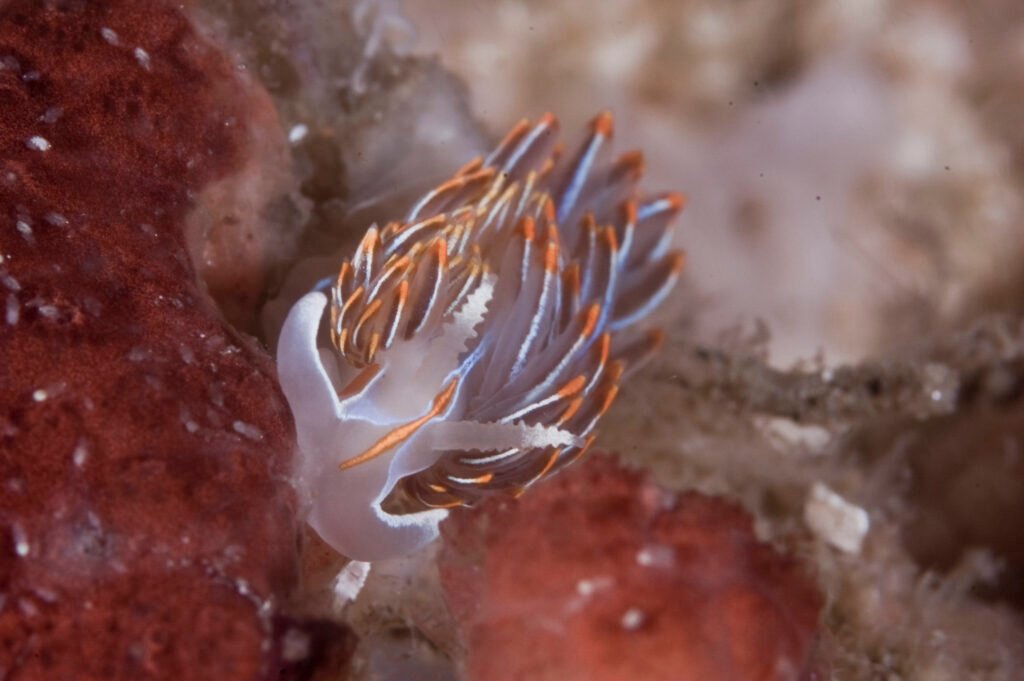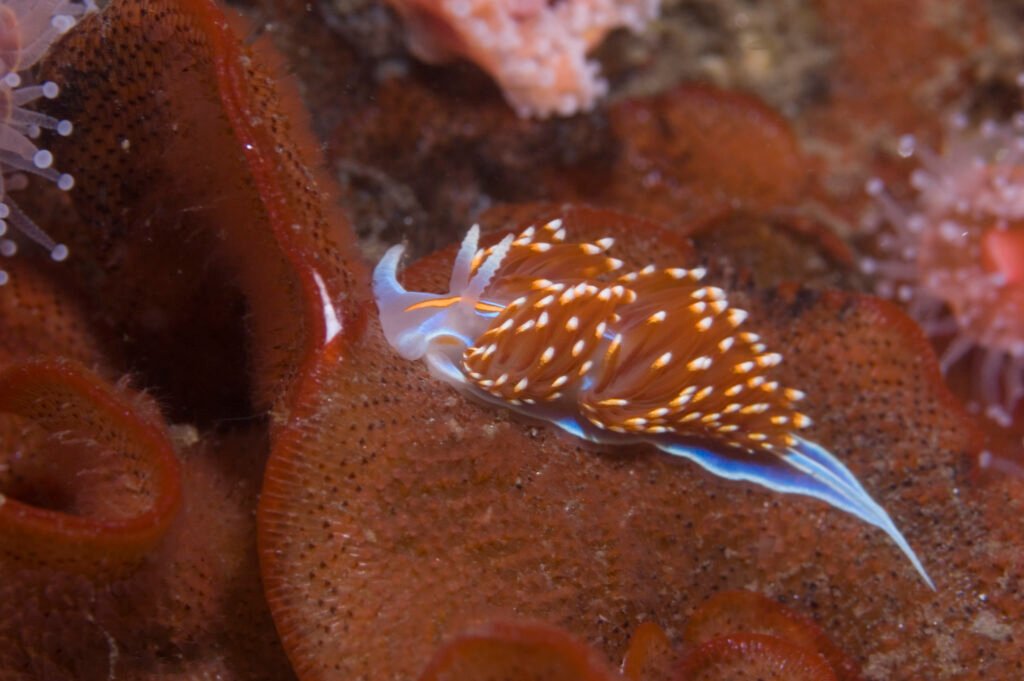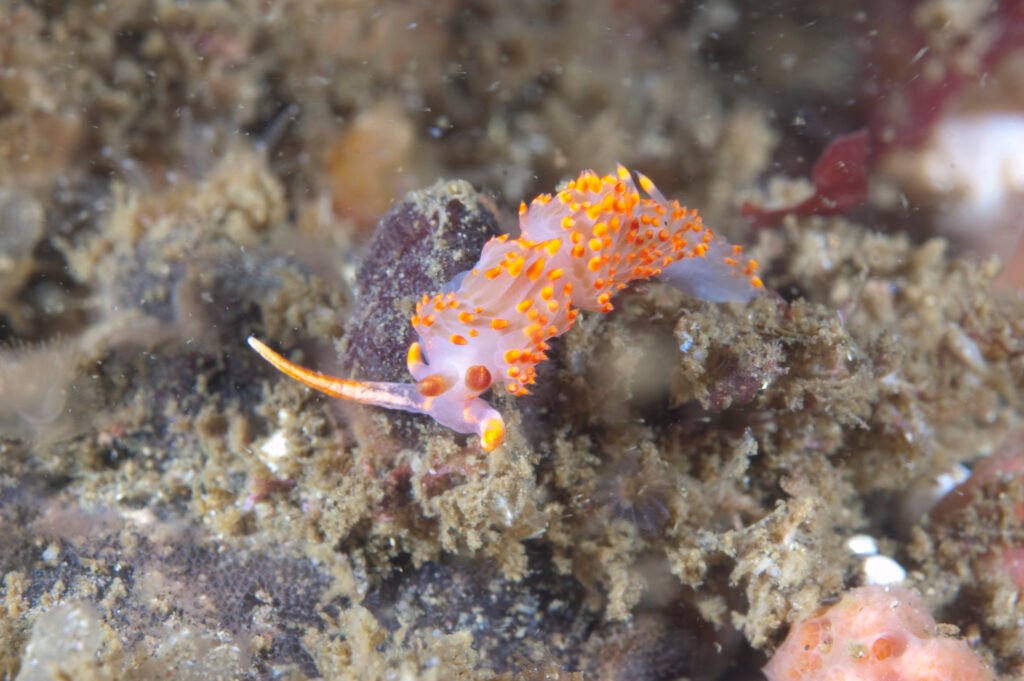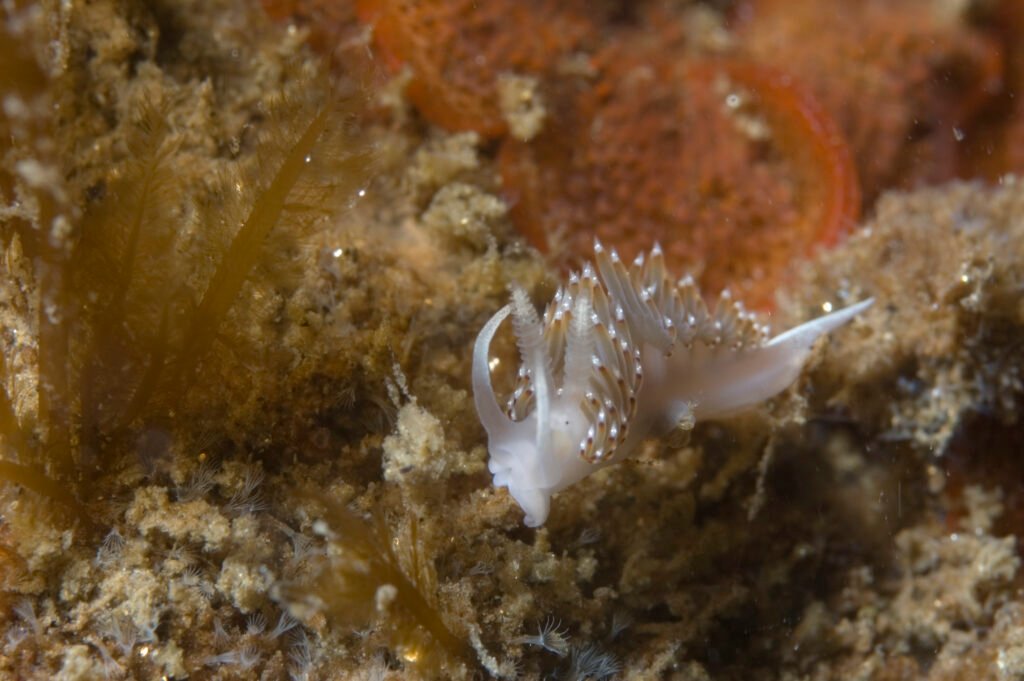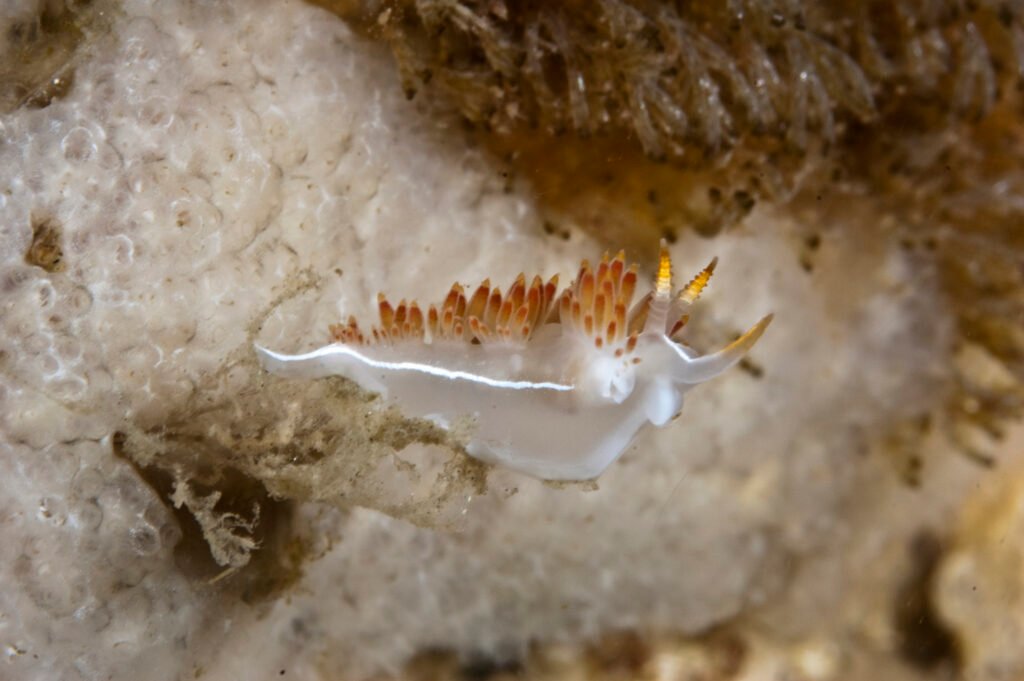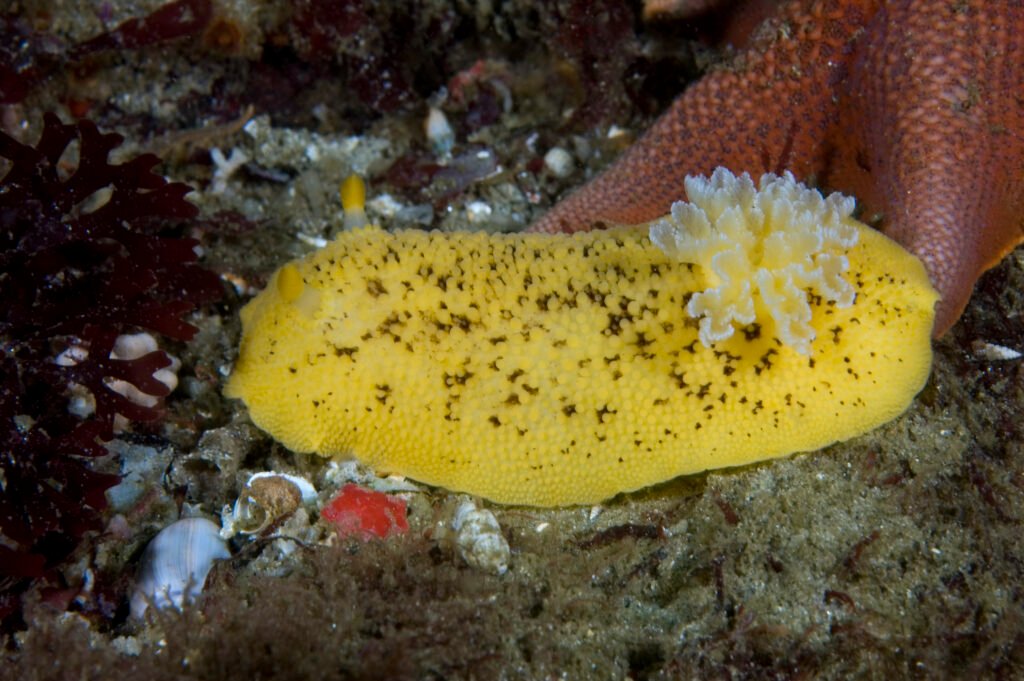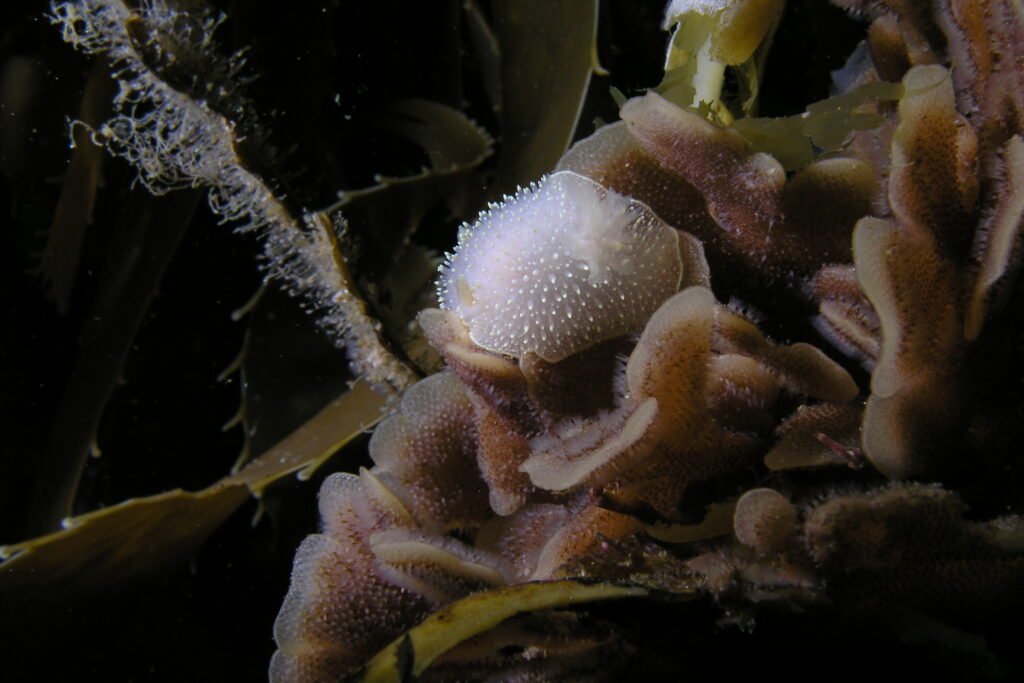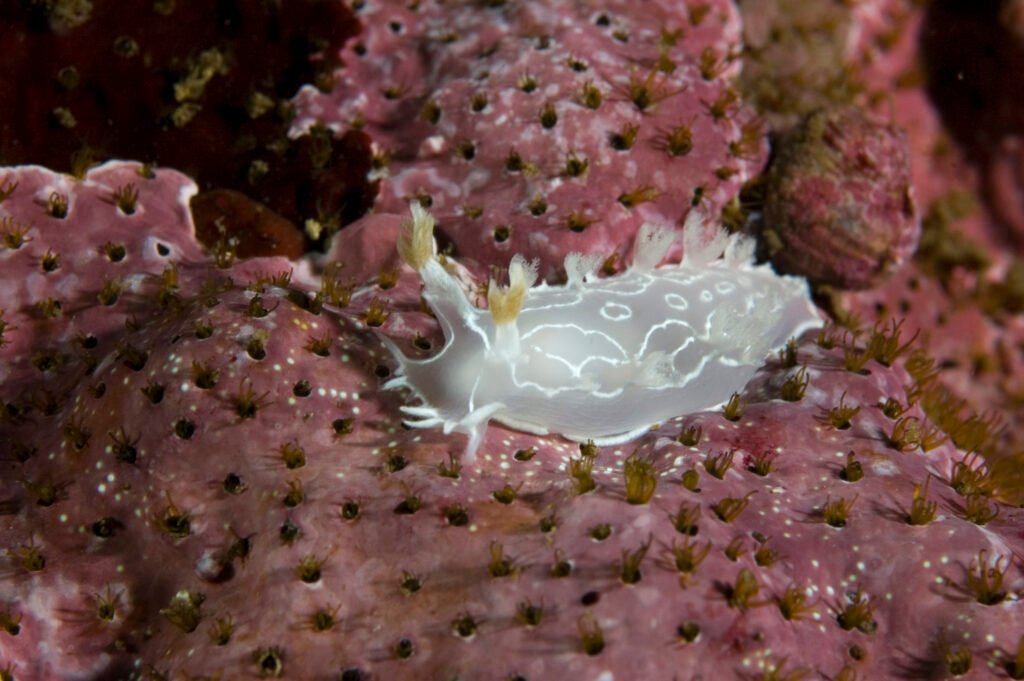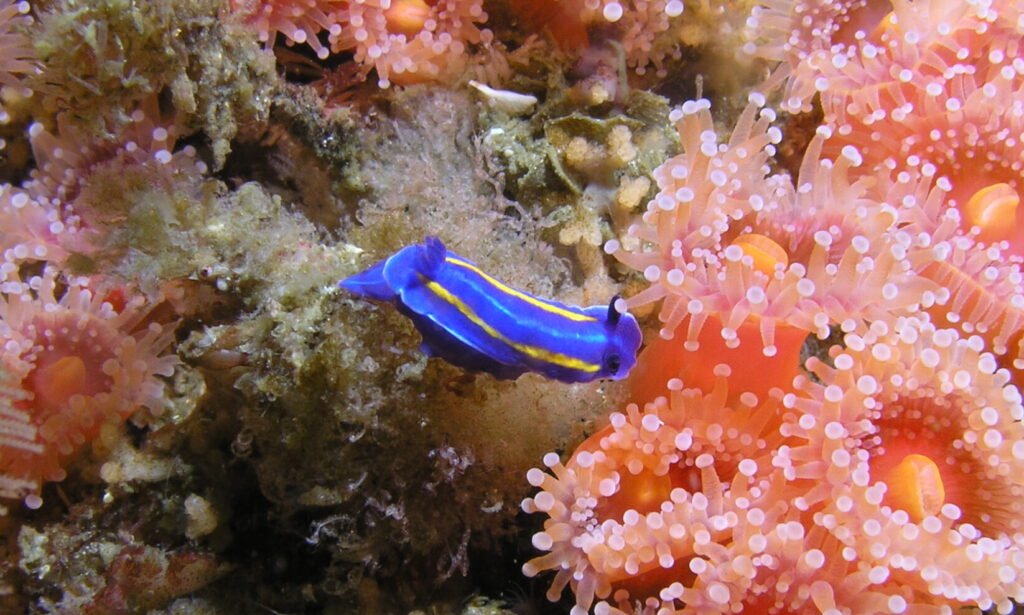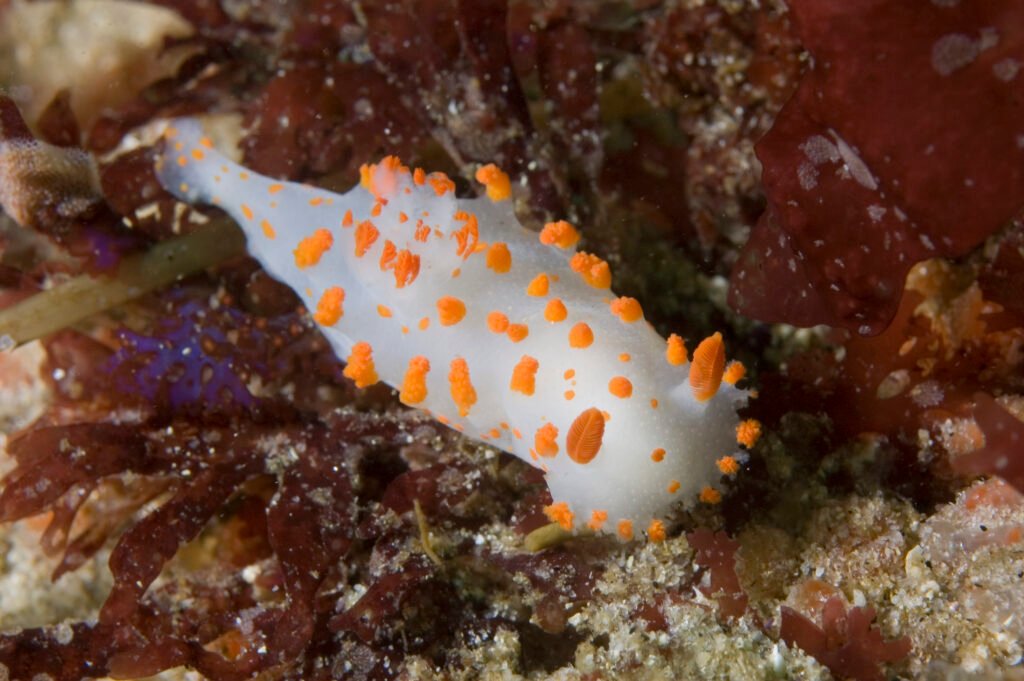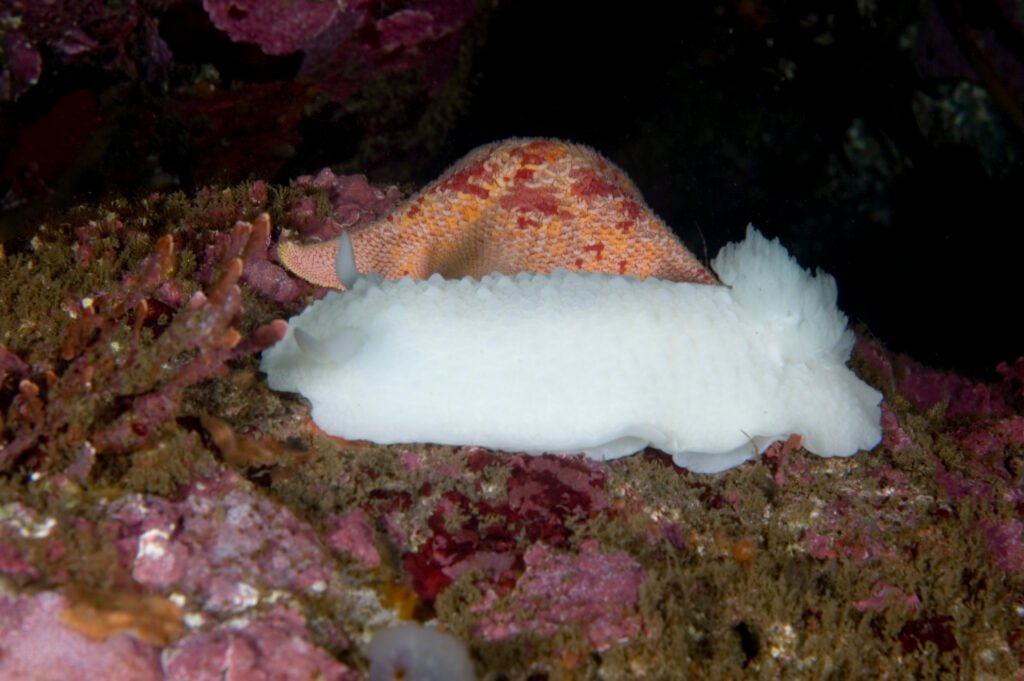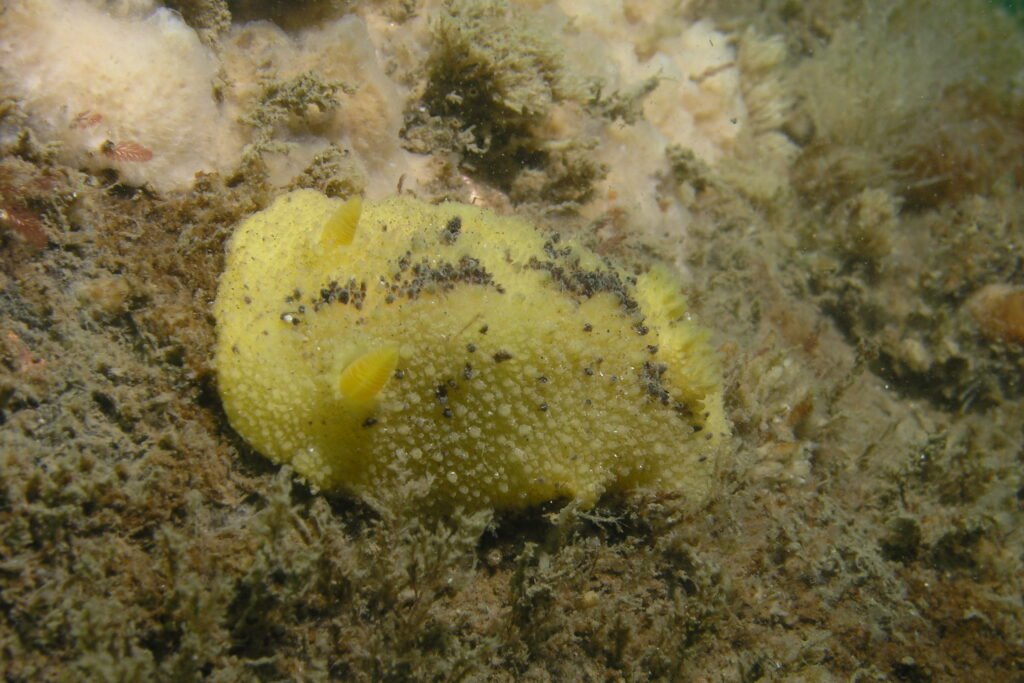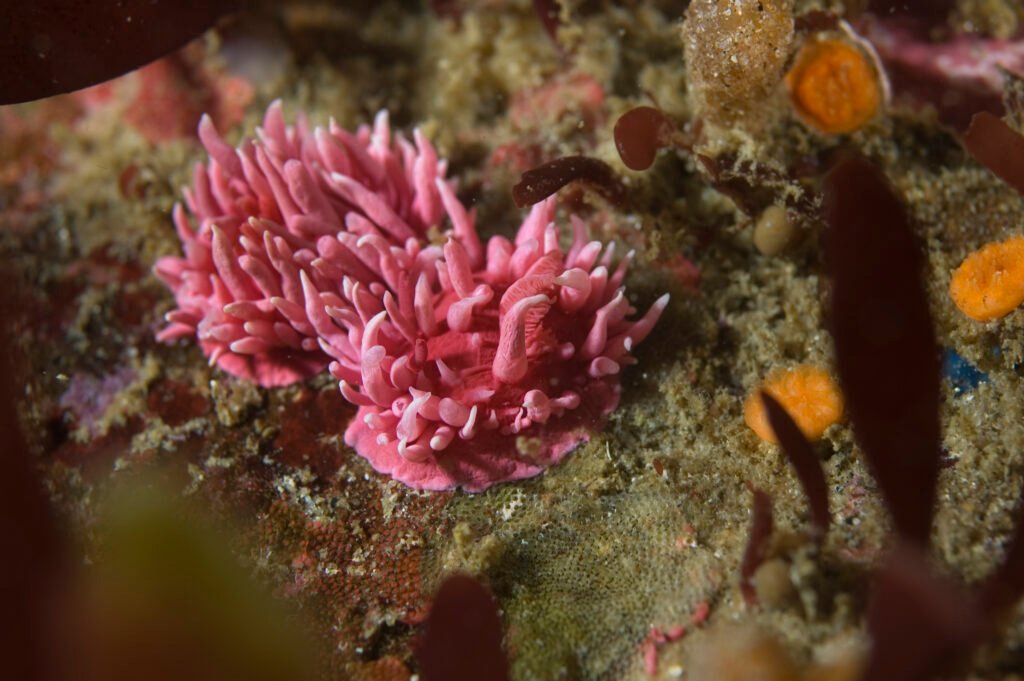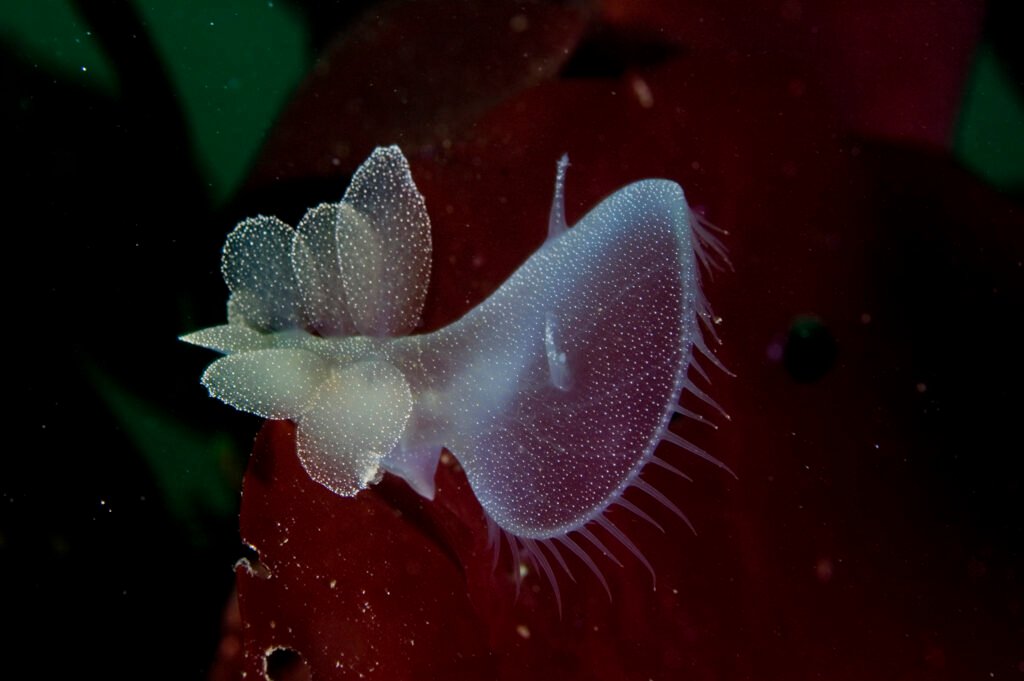Physical Description
The Thick-horned Nudibranch, scientifically known as Hermissenda crassicornus, showcases a translucent greyish-white body. It features a median band of brilliant cadmium orange between its oral tentacles, passing between the rhinophores and extending to the anterior of the cardiac region. Additionally, opalescent blue lines run dorsally on either oral tentacle, bifurcating proximally, with the inner portion extending between the rhinophores. Outer portions of these blue lines extend dorso-laterally to the tail tip. The nudibranch’s foot bears a narrow, opalescent blue line along its dorsal margin, from the foot corners to the tail tip. Cerata are arranged in 5-11 groups, with reddish-orange tips and a bluish-white longitudinal band on the anterior surface of each ceras. Rhinophores are weakly perfoliate, exhibiting about 10-14 lamellae, and appear opalescent white to very pale blue.
Habitat and Geographical Range
The Thick-horned Nudibranch is commonly found along the eastern Pacific coast. It inhabits various marine environments, including rocky substrates and kelp forests.
What They Eat and How They Breed
These nudibranchs likely feed on small invertebrates and algae. For reproduction, they likely engage in mating behavior, where they exchange sperm. Females then lay eggs, which are often deposited in gelatinous masses on suitable substrates. After hatching, the larvae undergo a pelagic stage before settling on the ocean floor.
Similar Nudibranchs
There are other species of aeolid nudibranchs that are very similar to the Thick-horned nudibranch. The key features to look for are the yellow racing stripe down the middle, bluish lines running through the cerata, and darker tips on the cerata. If these features do not exist, it may be one of these similar species.
Opalescent Nudibranch
Discover the captivating Opalescent Nudibranch found along the eastern Pacific coast. Learn about its unique physical features, habitat, diet, reproduction, and more.
Scarlet-Tip Aeolis
Explore the intriguing Stearn’s Aeolid, featuring translucent clarity, vibrant orange cerata, and yellowish-orange rhinophores, thriving along the eastern Pacific coast.
Smooth-Tooth Aeolis
The Smooth-tooth Aeolis has a translucent greyish-white body and distinctive cerata.
Three Lined Aeolid
Explore the captivating Three Lined Aeolid, characterized by three distinct white lines down its body, thriving along the eastern Pacific coast from Baja California to Alaska.
